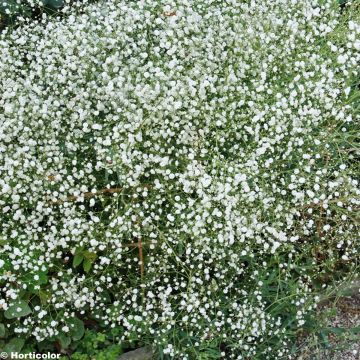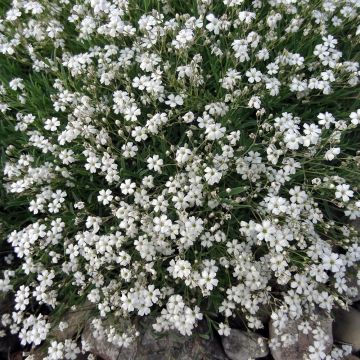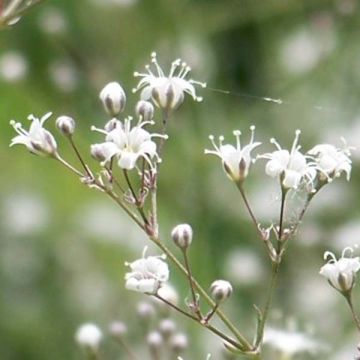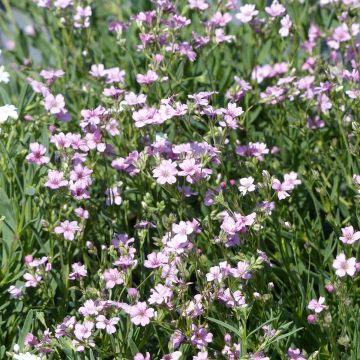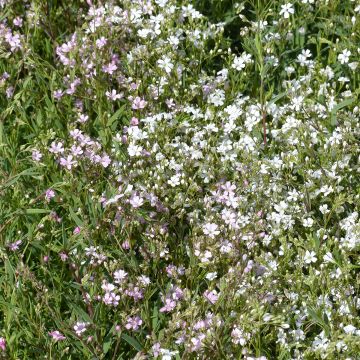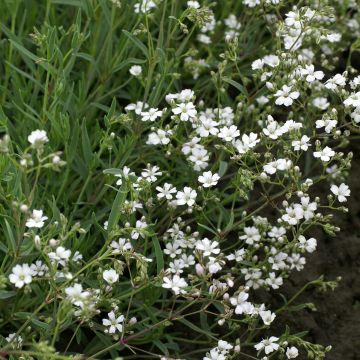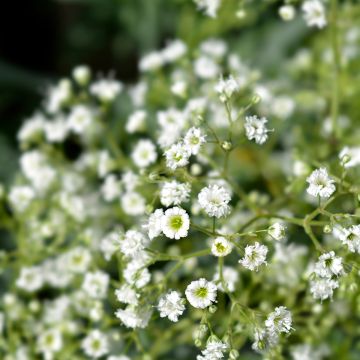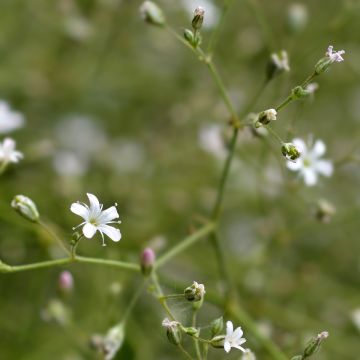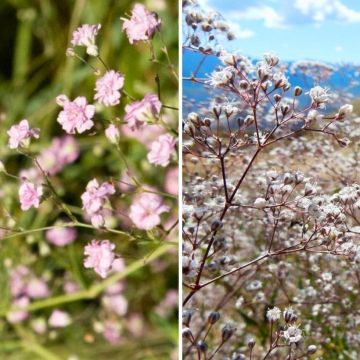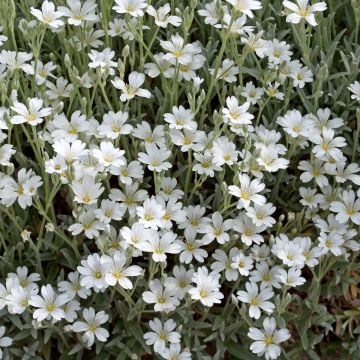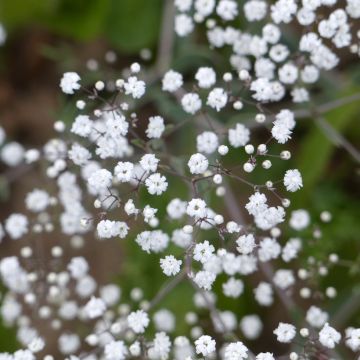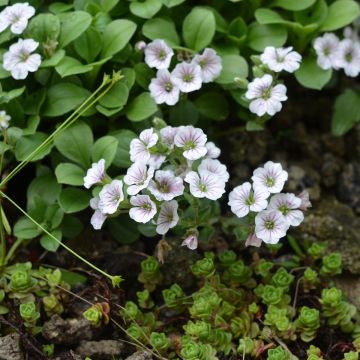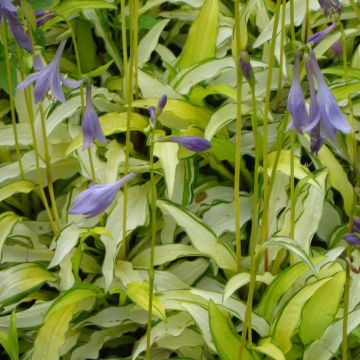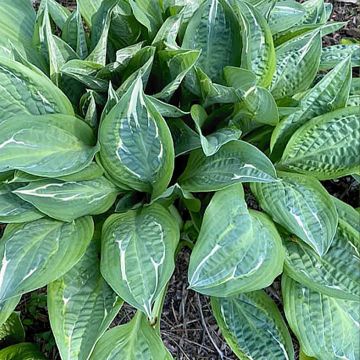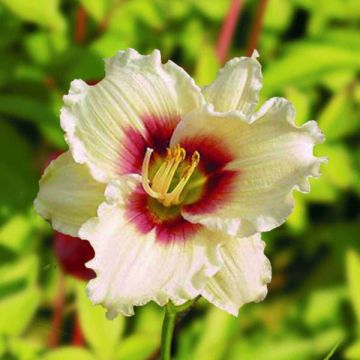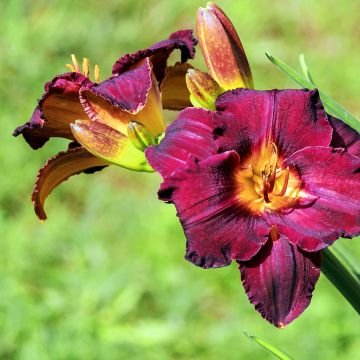

Gypsophila paniculata Festival Pink Lady
Gypsophila paniculata Festival Pink Lady
Gypsophila x paniculata Festival® Pink Lady
Baby's Breath
Special offer!
Receive a €20 voucher for any order over €90 (excluding delivery costs, credit notes, and plastic-free options)!
1- Add your favorite plants to your cart.
2- Once you have reached €90, confirm your order (you can even choose the delivery date!).
3- As soon as your order is shipped, you will receive an email containing your voucher code, valid for 3 months (90 days).
Your voucher is unique and can only be used once, for any order with a minimum value of €20, excluding delivery costs.
Can be combined with other current offers, non-divisible and non-refundable.
Why not try an alternative variety in stock?
View all →This plant carries a 12 months recovery warranty
More information
We guarantee the quality of our plants for a full growing cycle, and will replace at our expense any plant that fails to recover under normal climatic and planting conditions.
Would this plant suit my garden?
Set up your Plantfit profile →
Description
The Gypsophila paniculata 'Festival Pink Lady' is a variety selected for its small size and bushy habit, ideally suited for container gardening and border planting. This plant forms a mist of tiny, delicate pink flowers in the summer, adding a touch of elegance and poetry. It is often associated with romantic roses and can be grown in the garden and used in floral arrangements. It is also a hardy perennial, thriving in light and dry soils. This beautiful plant can quickly grow in full sun, where the soil does not retain water.
The Gypsophila Festival® 'Pink Lady' belongs to the Caryophyllaceae family and is a relative of carnations. It is a recent horticultural hybrid resulting from cross-breeding with the botanical species Gypsophila paniculata. The plant has a compact habit and will reach a mature size of approximately 40 cm (16in) in all directions. It flowers in June and July and can continue blooming until August if the soil remains moist. The flowers are numerous, semi-double, and only 1 cm (0in) in diameter. They start as tightly closed buds with a deep pink colour, gradually opening into delicate blooms. The flowers are arranged in large paniculate clusters, measuring 25 to 40 cm (10 to 16in) wide, creating a light gradient of pink. The foliage is glaucous in colour and evergreen to semi-evergreen in winter, depending on the climate. The leaves are small, narrow, linear, and fleshy, measuring 1 to 3 cm (0 to 1in) in length. They are carried by knotty stems.
Gypsophila 'Festival Pink Lady' can be grown in containers or in the ground. This perennial plant thrives in rock gardens, elevated and well-exposed flower beds, and along pathways if the soil is light. It pairs perfectly with bush or ground cover roses in white, pink, mauve, and purple shades. This plant is ideal for dry gardens, as a blanket bog or on sunny slopes. Its airy flowering complements the spikes of Salvia nemorosa 'Blue Bouquetta' and the Verbascum phoeniceum 'Violetta', for example. This gypsophila brings a touch of poetry to the summer decor of terraces and balconies. Lastly, it is well-known for its use in dried and fresh floral arrangements.
Report an error about the product description
Flowering
Foliage
Plant habit
Botanical data
Gypsophila
x paniculata
Festival® Pink Lady
Caryophyllaceae
Baby's Breath
Cultivar or hybrid
Other Gypsophila
View all →Planting and care
Gypsophila paniculata 'Festival Pink Lady' is a plant that likes warm and sunny conditions. For best results, plant it in well-drained, light, poor soil. Make sure it isn't too close to other plants; about 50 cm (20 in) away is good.
If the soil doesn't drain well, the plant will behave like an annual and die in winter. But if the soil is well-drained, it can tolerate the cold and live for many years.
To keep your Gypsophila healthy, remove wilted flowers. If the plant's stems get too tall, stake or tie them up. After flowering or before new growth begins, prune the dry parts of the plant.
Planting period
Intended location
Care
This item has not been reviewed yet - be the first to leave a review about it.
Similar products
Haven't found what you were looking for?
Hardiness is the lowest winter temperature a plant can endure without suffering serious damage or even dying. However, hardiness is affected by location (a sheltered area, such as a patio), protection (winter cover) and soil type (hardiness is improved by well-drained soil).

Photo Sharing Terms & Conditions
In order to encourage gardeners to interact and share their experiences, Promesse de fleurs offers various media enabling content to be uploaded onto its Site - in particular via the ‘Photo sharing’ module.
The User agrees to refrain from:
- Posting any content that is illegal, prejudicial, insulting, racist, inciteful to hatred, revisionist, contrary to public decency, that infringes on privacy or on the privacy rights of third parties, in particular the publicity rights of persons and goods, intellectual property rights, or the right to privacy.
- Submitting content on behalf of a third party;
- Impersonate the identity of a third party and/or publish any personal information about a third party;
In general, the User undertakes to refrain from any unethical behaviour.
All Content (in particular text, comments, files, images, photos, videos, creative works, etc.), which may be subject to property or intellectual property rights, image or other private rights, shall remain the property of the User, subject to the limited rights granted by the terms of the licence granted by Promesse de fleurs as stated below. Users are at liberty to publish or not to publish such Content on the Site, notably via the ‘Photo Sharing’ facility, and accept that this Content shall be made public and freely accessible, notably on the Internet.
Users further acknowledge, undertake to have ,and guarantee that they hold all necessary rights and permissions to publish such material on the Site, in particular with regard to the legislation in force pertaining to any privacy, property, intellectual property, image, or contractual rights, or rights of any other nature. By publishing such Content on the Site, Users acknowledge accepting full liability as publishers of the Content within the meaning of the law, and grant Promesse de fleurs, free of charge, an inclusive, worldwide licence for the said Content for the entire duration of its publication, including all reproduction, representation, up/downloading, displaying, performing, transmission, and storage rights.
Users also grant permission for their name to be linked to the Content and accept that this link may not always be made available.
By engaging in posting material, Users consent to their Content becoming automatically accessible on the Internet, in particular on other sites and/or blogs and/or web pages of the Promesse de fleurs site, including in particular social pages and the Promesse de fleurs catalogue.
Users may secure the removal of entrusted content free of charge by issuing a simple request via our contact form.
The flowering period indicated on our website applies to countries and regions located in USDA zone 8 (France, the United Kingdom, Ireland, the Netherlands, etc.)
It will vary according to where you live:
- In zones 9 to 10 (Italy, Spain, Greece, etc.), flowering will occur about 2 to 4 weeks earlier.
- In zones 6 to 7 (Germany, Poland, Slovenia, and lower mountainous regions), flowering will be delayed by 2 to 3 weeks.
- In zone 5 (Central Europe, Scandinavia), blooming will be delayed by 3 to 5 weeks.
In temperate climates, pruning of spring-flowering shrubs (forsythia, spireas, etc.) should be done just after flowering.
Pruning of summer-flowering shrubs (Indian Lilac, Perovskia, etc.) can be done in winter or spring.
In cold regions as well as with frost-sensitive plants, avoid pruning too early when severe frosts may still occur.
The planting period indicated on our website applies to countries and regions located in USDA zone 8 (France, United Kingdom, Ireland, Netherlands).
It will vary according to where you live:
- In Mediterranean zones (Marseille, Madrid, Milan, etc.), autumn and winter are the best planting periods.
- In continental zones (Strasbourg, Munich, Vienna, etc.), delay planting by 2 to 3 weeks in spring and bring it forward by 2 to 4 weeks in autumn.
- In mountainous regions (the Alps, Pyrenees, Carpathians, etc.), it is best to plant in late spring (May-June) or late summer (August-September).
The harvesting period indicated on our website applies to countries and regions in USDA zone 8 (France, England, Ireland, the Netherlands).
In colder areas (Scandinavia, Poland, Austria...) fruit and vegetable harvests are likely to be delayed by 3-4 weeks.
In warmer areas (Italy, Spain, Greece, etc.), harvesting will probably take place earlier, depending on weather conditions.
The sowing periods indicated on our website apply to countries and regions within USDA Zone 8 (France, UK, Ireland, Netherlands).
In colder areas (Scandinavia, Poland, Austria...), delay any outdoor sowing by 3-4 weeks, or sow under glass.
In warmer climes (Italy, Spain, Greece, etc.), bring outdoor sowing forward by a few weeks.






























